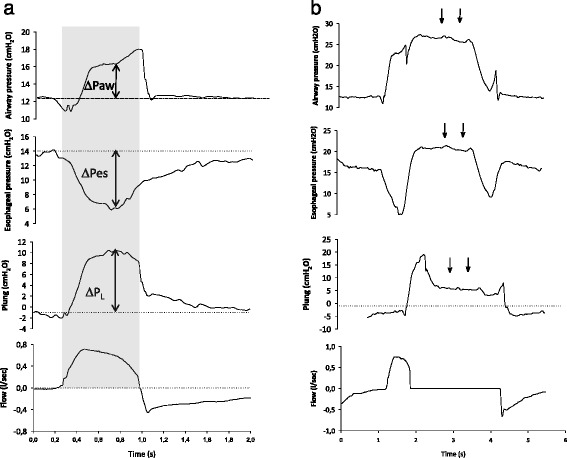Fig. 1.

Individual examples of airway and esophageal pressure tracings of pressure support breaths sampled during regular tidal ventilation (a) and one prolonged inspiratory hold (b). a For each selected breath, from the airway (ΔPaw) and esophageal (ΔPes) pressure swings we calculated the transpulmonary lung pressure (Plung) swings (ΔPL) as changes from the end expiration (dotted lines) at two time points of interest: the point of maximum ΔPL and the mean over inspiration (gray rectangular area). b Following an inspiratory hold, when the patient relaxes the inspiratory muscles, a plateau is seen in airway and esophageal pressure (arrows), whose differences from the end-expiratory level represent the elastic recoil pressure of the respiratory system and of the chest wall, respectively
